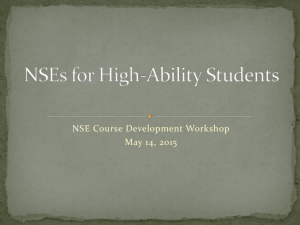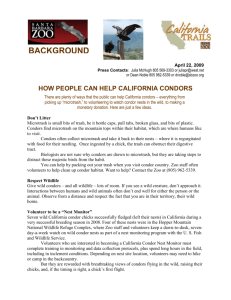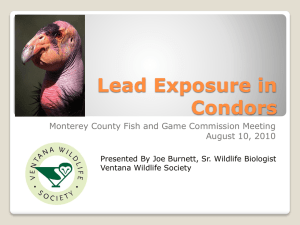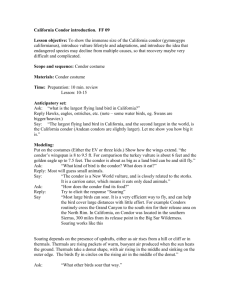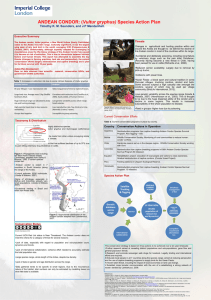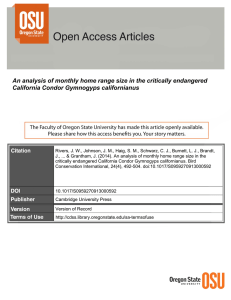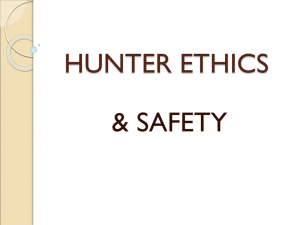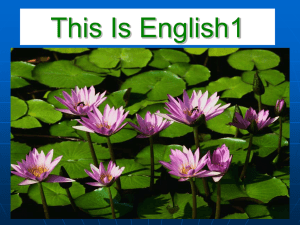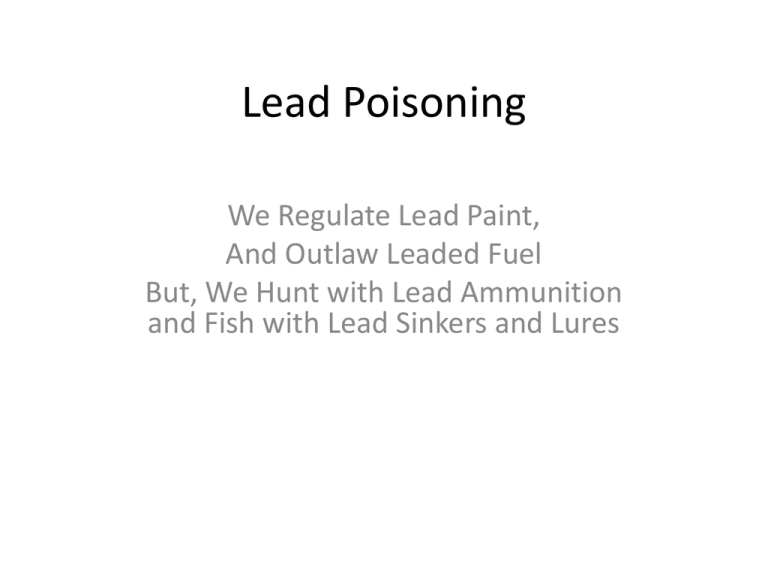
Lead Poisoning
We Regulate Lead Paint,
And Outlaw Leaded Fuel
But, We Hunt with Lead Ammunition
and Fish with Lead Sinkers and Lures
Lead Toxicity
• Known since 2nd Century BC
• Damages cell membranes
• Disrupts enzyme production
– Interfere with Vitamin D and heme production
• Blocks NMDA receptors which bind glutamate
in neurons
• Effects organs
– Kidneys, heart, gonads
Some Exposure in Hunters
• Hunters that eat more venison have more
lead in blood, but very low levels typically
CDC and North Dakota Dept of Health, 2008 Study of hunters
Some Steps Taken
• Lead shot banded from waterfowl hunting
– US, 1991
– Canada, 1997
• Lead in fishing lures/weights banned selectively
– 13 Loon lakes in WA, May 2011
• National ban on lead denied 2010 by EPA
– Petition to amend Toxic Substances Control Act of
1976 by CBD, ABC, led by Michael Fry claimed
• 20 million birds / year killed
• 3,000 tons of lead on hunting grounds / year
• 4,000 tons in fresh water
Loons, Lead, Stones
Loon Deaths
Swans in the Northwest
• Since 1999, 2300
swans (mostly
Trumpeter and
some Tundra)
died from
ingesting lead
shot in BC and
Whatcom County,
WA
www.swansociety.org
California Condor and other Scavengers
Photo by Sue Haig
(Lambertucci et al. 2011)
Lead Shot Ban Does Not Protect Bald and Golden Eagles
Kramer and Redig 1997
Eagles in Pacific Northwest Get Lead from Scavenging, (e.g. coyote)
Stauber et al. 2010
Exposure Particularly Bad in Winter, not during Autumn Hunting
In Wyoming, Ravens Exposed to Lead in Autumn
(Craighead and
Bedrosian 2008)
Raven Exposure is Related to Hunting Season
California Condor: A Rare Species
• Captive breeding
and release has
brought the condor
from 22 birds and
extirpation from the
wild to 300+ birds
and 150+ wild birds
in two decades
– 4 breeding facilities
– Releases southern
and central
California, Arizona,
Baja in Mexico
• Condors survive in
the wild only
through constant
and costly human
assistance and
intervention
Figure from Wallace et al. 2007 California Condor Master Plan
(Walters et al. 2010)
Lead is Major Problem for Condors
During Hunting Season
Chelation
Molecules with negative charge bind positively charged lead,
form non-toxic chelate that is excreted
Example from Snapping Turtle
(Borkowski 1997)
Banning Lead Ammunition in the Range of the California Condor in
California (2008)
Kelly et al. 2011
Less Lead in Scavengers After Ban
Not Fully Protecting Condors:
2010 first chick born in Pinnacles in 100 years has to be chelated (Audubon California)
In Arizona, when Condors scavenge on North
Kaibab, they encounter and ingest lots of lead
Green et al. 2008
3 Birds Died in 2008
Condors Go North During Hunting Season
Movements into high lead, north Kaibab, is expected to kill Condors
HUMANS
Hunting Good, Lead
Bad
Photo by Anna Fuentes
• Conclusion: condors suffer lead poisoning from ingestion of spent ammunition
sufficiently frequently to raise mortality rates well above those required for
sustainability
• Conclusion: Hunters are the dominant predators within condor’s range and are
important source of food for condors
• Recommendation: Eliminating lead threat should not be accomplished by reduction
in hunting, but by replacement of lead ammunition with non-lead alternatives.
Hunters should be made aware of their importance to condors
(Walters et al. 2010)
Lead Is Not the Only Problem
• Conclusions: Successful nesting in southern California is
contingent upon intensive nest monitoring because of the
microtrash problem
• Most promising approaches to problem are cleaning up trash,
returning offending adults to captivity for aversive training,
promoting more natural foraging patterns
– Latter may not reduce feeding of microtrash by breeders with tradition of
such behavior
Recommendation: Continue to clean
up trash, conduct experiments with
aversive training
Photo courtesy of USFWS
References
•
•
•
•
•
•
•
•
•
Pokras, M., Kneeland, M., Ludii, A., Golden, E, Major, A., Miconi, R., and R. H. Poppenga.
2009. Lead objects ingested by common loons in New England. Northeastern Naturalist
16:177-182.
Green, R. E., Hunt, W. G., Parish, C. N., and I. Newton. 2008. Effetiveness of action to
reduce exposure of free-ranging California Condors in Arizona and Utah to lead from
spent ammunition. PLOS One 3:e4022.
Craighead, D. and B. Bedrosian. 2008. Blood lead levels of common ravens with access
to big-game offal. J. Wildlife Management 72:240-245.
Kramer, J. L. and P. T. Redig. 1997. Sixteen years of lead poisoning in eagles, 1980-95: an
epizootiologic view. J. Raptor Research 31:327-332.
Borkowski, R. 1997. Lead poisoning and intestinal perforations in a snapping turtle due
to fishing gear ingestion. J. Zoo and Wildlife Medicine 28:109-113.
Lambertucci, S. A., Donazar, J. A., Huertas, A. D., Jimenez, B., Saez, M., Sanchez-Zapata,
J. A., and Hiraldo, F. 2011. Widening the problem of lead poisoning to a South-American
top scavenger: lead concentrations in feathers of wild Andean condors. Biological
Conservation 144:1464-1471.
Kelly, T. R., Bloom, P. H., Torres, S. G., Hernandez, Y. Z., Poppenga, R. H., Boyce, W. M.,
and C. K. Johnson. 2011. Impact of the California lead ammunition ban on reducing lead
exposure in golden eagles and turkey vultures. PLOS One 6:e17656.
Walters, J. R., Derrickson, S. R., Fry, D. M., Haig, S. M., Marzluff, J. M., and J. M.
Wunderle. 2010. Status of the California Condor and efforts to achieve its recovery. Auk
127:969-1001.
Stauber, E., Finch, N., Talcott, P. A., and J. M. Gay. 2010. Lead poisoning of bald and
golden eagels in the US inland Pacific northwest region—an 18-year retrospective
study: 1991-2008. J. Avian Medicine and Surgery 24:279-287.

